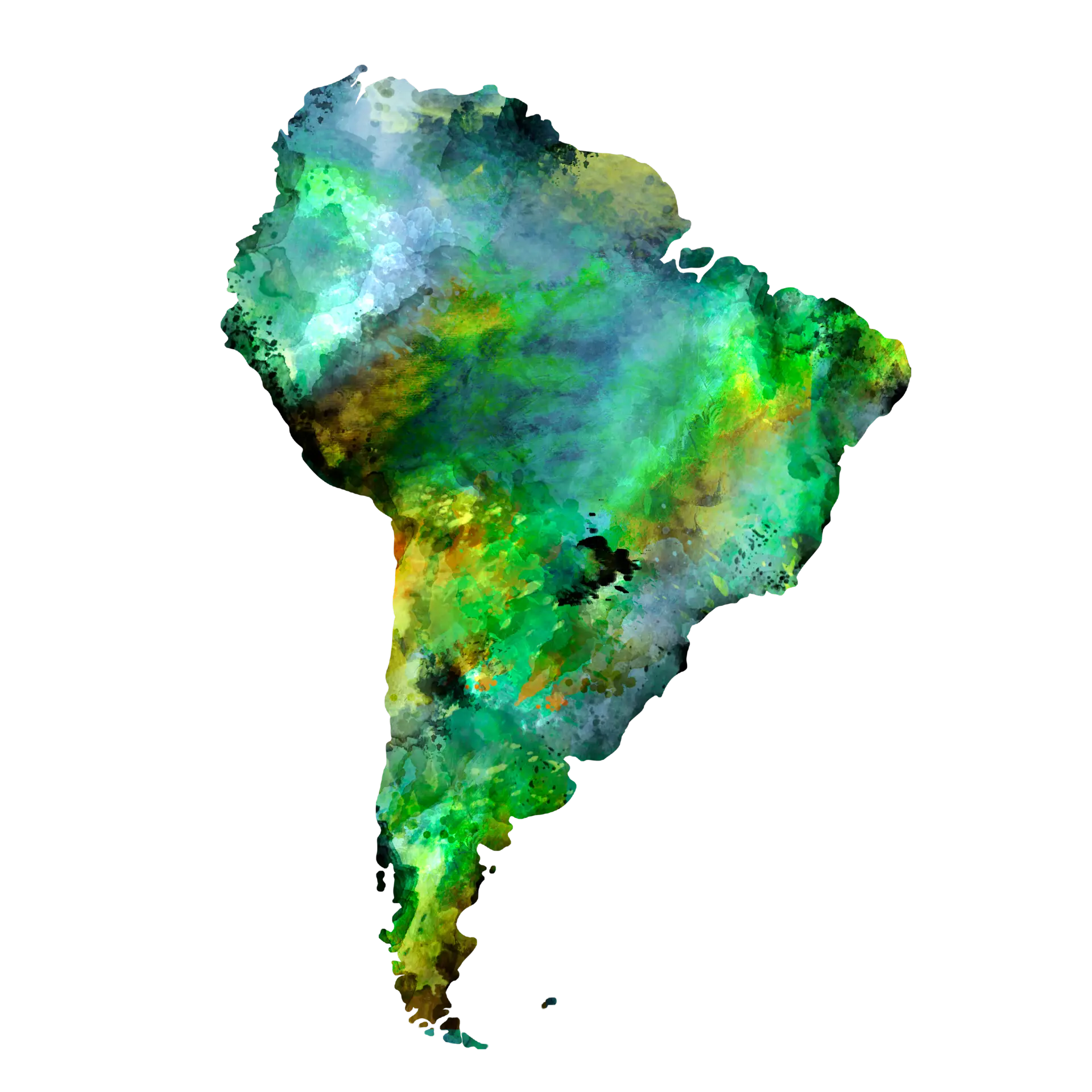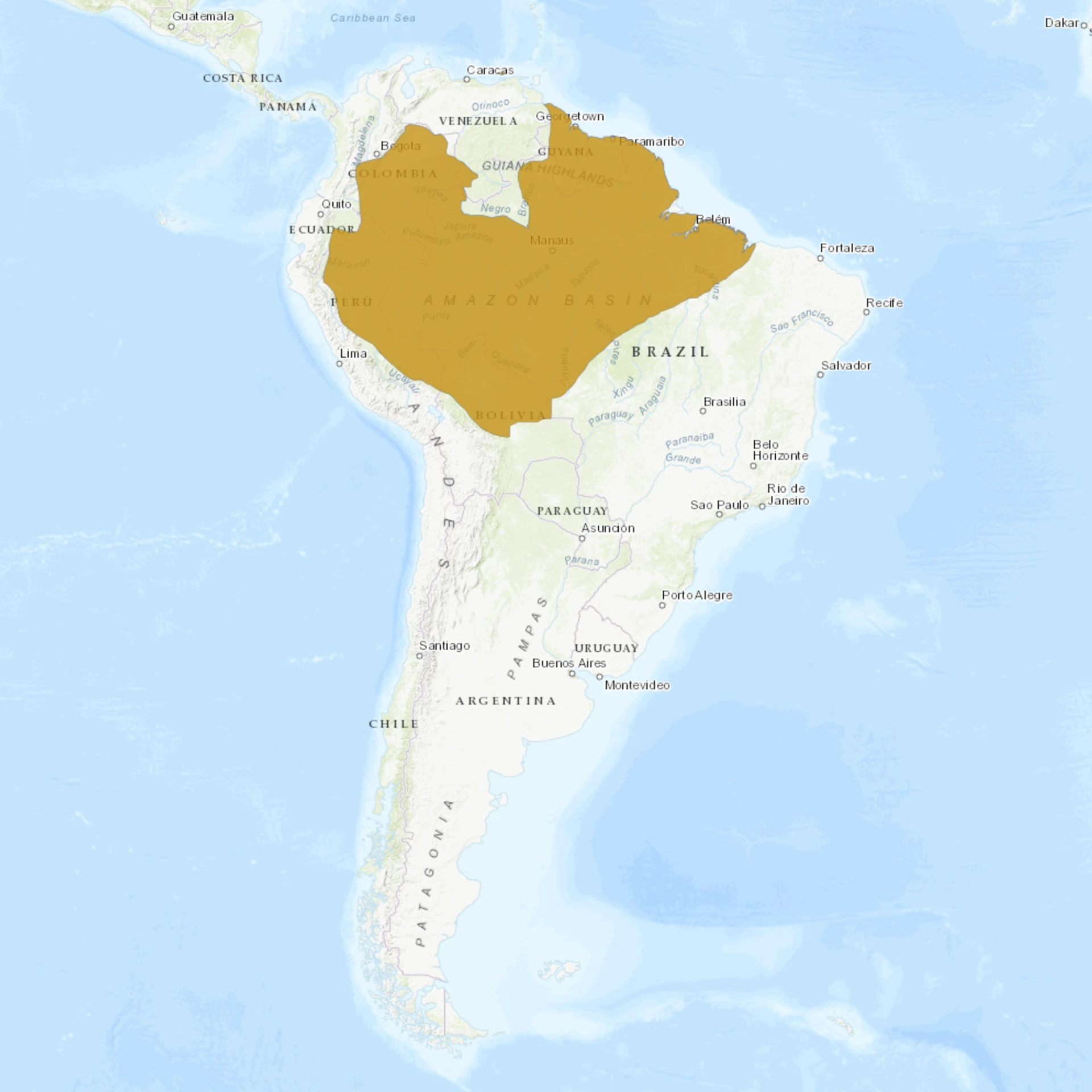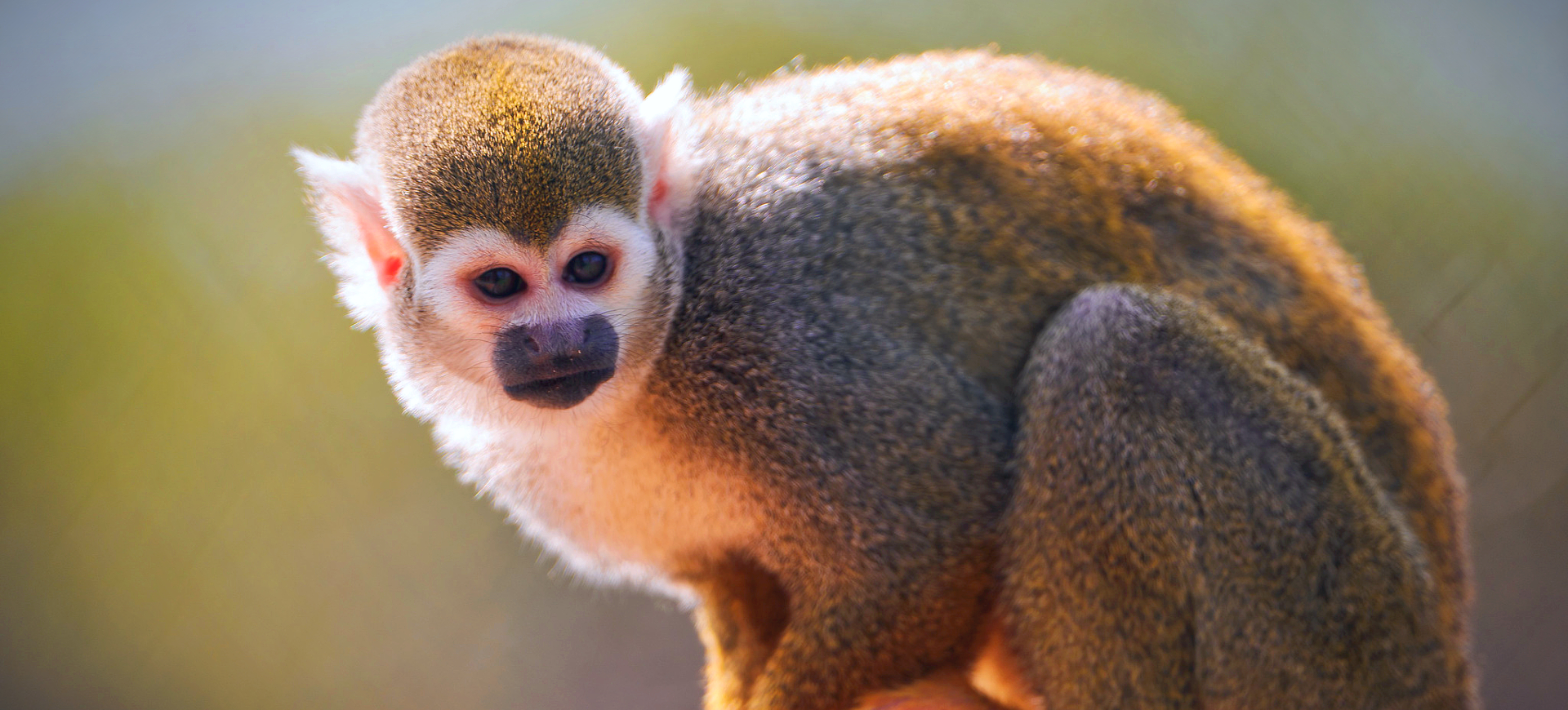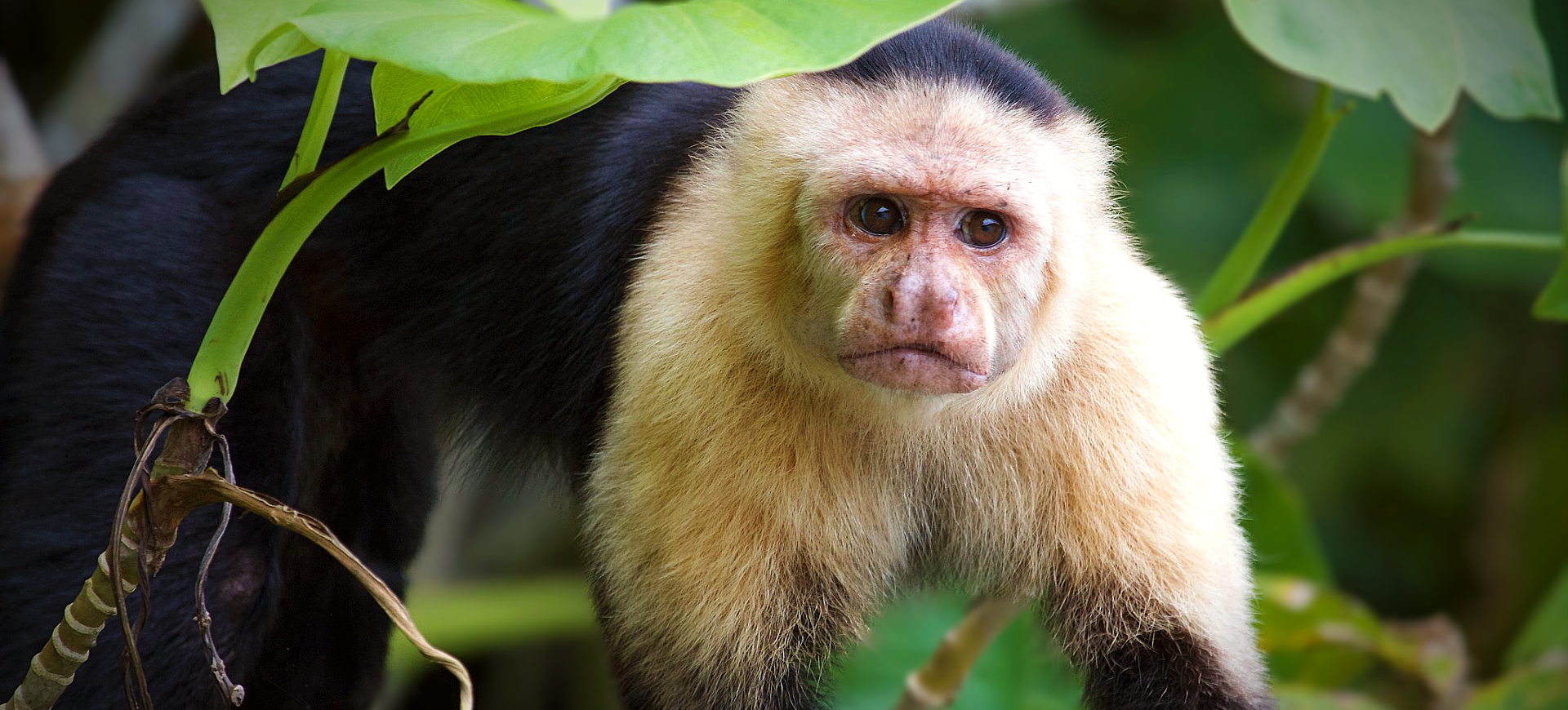Overview
The Tufted Capuchin, scientifically named Sapajus apella, is a highly intelligent and adaptable New World primate known for its distinctive physical features and behaviors. Native primarily to South America, these monkeys are medium-sized, with a robust body, a short, thick tail, and a characteristic cap of hair that resembles a tuft. They are renowned for using tools, a trait that places them among the most intelligent non-human primates. Tufted Capuchins are also known for their complex social structures and have been widely studied for their cognitive abilities.
Their natural habitat includes many forest types, from wet lowland forests to dry deciduous forests. The Tufted Capuchin’s diet is incredibly varied and includes fruits, seeds, insects, small vertebrates, and even certain plant parts. These monkeys are diurnal and arboreal, spending most of their time in the trees, although they are not opposed to descending to the ground in search of food or exploration. Their high adaptability has allowed them to thrive in various environments, though habitat destruction poses a significant threat to their populations.
The Tufted Capuchin has a long history of interaction with humans, often depicted in popular culture and sometimes kept as pets. However, this practice is discouraged due to their complex social and environmental needs. They are also used in biomedical research and have contributed significantly to our understanding of primate behavior and cognition. Conservation efforts for these monkeys are focused on habitat preservation and research, emphasizing their ecological importance and the need to maintain biodiversity in their native regions.
Current distribution:
The Tufted Capuchin is distributed widely across northern and central South America. Their range extends from the east of the Andes in Colombia and Venezuela through the Amazon Basin, encompassing countries such as Ecuador, Peru, and Brazil. These monkeys are adaptable and have been found in various types of forests within this range, from lowland tropical rainforests to higher-altitude deciduous forests. Their presence in diverse habitats demonstrates their ability to adapt to environmental conditions and resource availabilities.
Despite their adaptability, Tufted Capuchins face challenges related to habitat loss and fragmentation. Their populations have declined significantly in some areas, but in other regions, they remain common. The expansion of agriculture, logging, and urban development has led to the loss of their natural habitats, posing a threat to their survival. Conservation efforts are crucial to maintaining the habitats and corridors that enable these primates to thrive and move freely in their natural range.
Physical Description:
The Tufted Capuchin is distinguished by its dark brown to black body hair, with the characteristic “tufted” hair on its head, from which it derives its common name. They have a prehensile tail, often as long as their body and aids in their arboreal lifestyle, providing balance and grip when navigating through trees. Adult Tufted Capuchins typically have a body length ranging from 12 to 22 inches, with males being larger than females. Their faces are pink or light brown, with deep-set eyes, and their expressive facial features contribute to their social interactions.
Sexual dimorphism is evident in this species, with males generally larger and more robust than females. Males weigh 6.6 to 13.2 lbs (3 to 6 kg), while females range from 4.4 to 8.8 lbs (2 to 4 kg). The height of these monkeys is typically around 16 to 22 inches (40 to 55 cm) for males and slightly less for females. The Tufted Capuchin’s agile and muscular body aids in its active lifestyle, making it a skilled climber and jumper in its arboreal habitat.

Lifespan: Wild: ~25 Years || Captivity: ~45 Years

Weight: Male: 6.6-13.2 lbs (3-6 kg) || Female: 4.4-8.8 lbs (2-4 kg)

Length: Male & Female: 16-22 in (40-55 cm)

Height: Male & Female: 16-22 in (40-55 cm)

Top Speed: 24 mph (39 km/h)
Characteristic:
Native Habitat:
The Tufted Capuchin is native to various regions in South America, including Brazil, Venezuela, Colombia, and parts of the Amazon basin. They inhabit many forest types, from tropical rainforests to dry deciduous forests, showing a remarkable ability to adapt to different environmental conditions. Their preference for dense forest canopy provides ample food sources and protection from predators. These monkeys are adept at navigating the complex layers of the forest, from the understory to the canopy, exploiting the diverse resources available in these habitats.
Their habitat preference is closely linked to the availability of food sources, particularly fruit-bearing trees and areas rich in insect life. Tufted Capuchins are also found in secondary forests and areas near human settlements, where they have adapted to exploit new food sources. The fragmentation of their habitat due to deforestation and agricultural expansion poses a significant threat, leading to isolated populations and decreased genetic diversity. Conservation efforts are focused on protecting and reconnecting these fragmented habitats to ensure the species’ long-term survival.
Climate Zones:
Biomes:
Biogeographical Realms:
Continents:
Diet:
Diet & Feeding Habits:
Tufted Capuchins have a highly varied diet, reflecting their adaptability and intelligence. They primarily consume fruits, which constitute the bulk of their diet, but they are also known to eat insects, small vertebrates, and various plant parts. Their foraging behavior is sophisticated and includes tool use, such as using stones to crack open nuts or shells, a skill learned and passed down through generations. These monkeys also manipulate their environment to access food, such as dipping their tails in water to lure and catch fish.
In addition to their natural diet, Tufted Capuchins have been observed adapting to human-altered environments, where they consume crops and other human foods. Their feeding habits are opportunistic and selective, ensuring they get a balanced diet necessary for their high-energy lifestyle. The social aspect of feeding is also prominent, with group members often sharing food, especially between mothers and their offspring. This sharing of resources strengthens social bonds and plays a crucial role in the social structure of their groups.
Mating Behavior:
Mating Description:
The Tufted Capuchin has a polygynous mating system, where a dominant male typically mates with several females within a group. During the mating season, males display increased aggression and competitiveness to establish dominance and mating rights. Courtship behaviors in Tufted Capuchins involve vocalizations, physical displays, grooming, strengthening social bonds, and facilitating mating. The reproductive success of males is often correlated with their rank within the group, with higher-ranking males having greater access to females.
Females exhibit receptiveness through physical cues and behaviors, to which males respond. The gestation period for Tufted Capuchins is approximately 160 to 180 days, after which a single offspring is usually born. Mothers are primarily responsible for caring for the young, although other group members may assist, including juveniles and other females. The high level of parental investment and care is a key factor in the survival and development of the offspring, ensuring they acquire the necessary skills and social behaviors for adult life.
Reproduction Season:
Birth Type:
Pregnancy Duration:
Female Name:
Male Name:
Baby Name:
Social Structure Description:
The Tufted Capuchin lives in social groups typically consisting of 10 to 20 individuals, sometimes more. These groups are multi-male, multi-female communities where both sexes remain in their natal groups for life. The social hierarchy is well-defined, with a dominant male leading the group and several male and female subordinates. Social interactions within these groups are complex, involving grooming, play, and various forms of communication.
Females have a strong social bond and often engage in cooperative behaviors, such as shared parenting and food sharing. The social structure is dynamic, with individuals forming alliances and competing for rank and mating opportunities. Young Capuchins learn social and survival skills through observation and participation in group activities, a process crucial for their development. The group’s social cohesion is vital for defending against predators, foraging, and navigating their environment.
Groups:
Conservation Status:
Population Trend:
The Tufted Capuchin has a relatively stable population in the wild, although specific numbers are unknown. They are widespread throughout their range in South America, with populations in various protected areas and national parks. These monkeys are adaptable and resilient in changing environmental conditions, partly due to their varied diet and intelligent foraging strategies. However, localized populations may be at risk due to habitat loss and fragmentation, a common issue across much of their range.
In areas with significant habitat destruction, Tufted Capuchin populations have experienced declines. Their adaptability has allowed some populations to thrive near human settlements, often leading to conflicts, especially in agricultural areas. Conservation efforts focus on habitat protection and creating biological corridors to facilitate genetic exchange between isolated populations. Research into their behavioral ecology and population dynamics is important for effective conservation strategies. Despite their challenges, the Tufted Capuchin’s adaptability and intelligence have been key to their survival in a rapidly changing environment.
Population Threats:
The primary threat to the Tufted Capuchin population is habitat loss due to deforestation and agricultural expansion. This loss leads to habitat fragmentation, which isolates populations and reduces genetic diversity, crucial for the species’ long-term survival. Additionally, they are threatened by hunting and trapping, often for the illegal pet trade or as a food source. These practices reduce wild populations and can lead to social disruption within groups.
Environmental changes, such as those caused by climate change, pose a significant threat to the Tufted Capuchin’s habitat and food sources. Increased frequency of extreme weather events can lead to habitat degradation and loss of food availability. Moreover, their adaptability has led to conflicts with humans, particularly in agricultural areas where they are seen as pests. Such conflicts can result in retaliatory killings or capture, further endangering local populations.
Conservation Efforts:
Conservation efforts for the Tufted Capuchin primarily involve habitat protection and establishing protected areas. Efforts are being made to create and maintain biological corridors to connect fragmented habitats, allowing for greater genetic flow between populations. Education and awareness programs are crucial in regions where human-wildlife conflict is common, aiming to promote coexistence and reduce negative interactions.
There is also a focus on enforcing laws against illegal hunting and the pet trade, which are significant threats to their survival. Research into the ecology and behavior of the Tufted Capuchin contributes to more effective conservation strategies and a better understanding of their needs in the wild. Participation of local communities in conservation efforts is also encouraged, as sustainable practices can benefit both the species and the people living near their habitats.
Additional Resources:
Fun Facts
- Tufted Capuchins are among the smartest New World monkeys known for their problem-solving abilities.
- They use various tools in the wild, including stones to crack nuts and sticks to dig out insects.
- These monkeys are capable swimmers, a rare trait among primates.
- Their facial expressions and vocalizations are highly developed for communication within the troop.
- Capuchins participate in a unique behavior known as “anointing,” where they rub various objects or substances on their fur, possibly for medicinal or social reasons.
- They have a diverse range of vocal calls, each serving a specific purpose, such as warning of predators or signaling food.
- Tufted Capuchins have shown a sense of fairness and empathy, rare traits in the animal kingdom.
- These monkeys have been used as service animals for people with disabilities, demonstrating their intelligence and trainability.
- In some cultures, they are considered symbols of intelligence and cunning.
- They play a significant role in their ecosystem as seed dispersers and as part of the food web.









